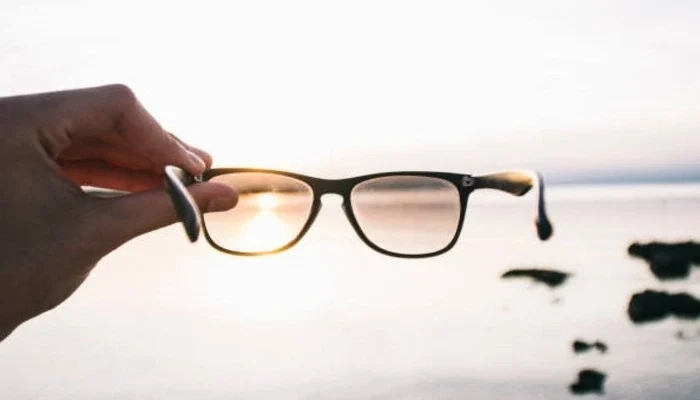Introduction to Low Bridge Fit
Understanding eyewear that accommodates different facial structures can significantly enhance comfort and fit. One such structure, a low nose bridge, requires special consideration when choosing glasses. People with low bridges often find traditional glasses sitting too high on their faces or sliding down quickly, causing discomfort and frequent adjustments. Frames designed for low bridge fit are crafted to rest securely on the face, focusing on comfort and proper positioning. These glasses have deeper nose pads or specific frame angles that provide a more stable fit, preventing slipping and ensuring the lenses align correctly with the eyes.
When selecting frames for this facial type, it’s essential to consider aesthetics and functionality. The key benefit of low-bridge-fit glasses is that they stay in place without pinching or causing pressure marks. Well-fitted glasses enhance comfort and clarity, whether reading, working, or engaging in physical activity. If you often adjust your eyewear, consider low bridge glasses explicitly designed to match your facial contours for a more secure fit.
Understanding Facial Structures
The nuances of facial structures are as varied as the individuals themselves, which means one size rarely fits all. The bridge of the nose, cheekbones, and overall facial contour determine how glasses sit on one’s face. Recognizing these unique physical attributes is crucial in selecting eyewear that looks good and functions well. Structurally, a low bridge means less space for the glasses to sit, necessitating specialized frames that accommodate this feature without compromising style or functionality.
Facial structures can affect how frames tilt and where they rest, impacting vision and comfort. For those with a shallow nose bridge, typical frames may sit too high or slide, which can be distracting or uncomfortable. You can choose glasses that enhance your style and comfort by understanding and acknowledging your unique facial structure.
Tips for Selecting the Right Frame
Choosing frames involves more than just picking a design you fancy. It’s a thoughtful process of matching frames to your unique facial landscape. Before settling on a pair, consider factors like the frame shape and size. These considerations ensure that the glasses do not slide down the nose or sit awkwardly on the face, which could lead to constant adjustments and discomfort.
Opt for frames that provide ample nose-pad support or adjustable bridges, ensuring your glasses align with your face’s natural contours. Avoid choosing too wide or heavy frames, as these can cause discomfort over time. Lightweight materials like titanium or acetate often blend style with comfort, providing a long-lasting and pleasant everyday wearing experience.
Importance of Bridge Measurement
The bridge measurement of your glasses could be the difference between a stable fit and one that constantly needs adjustment. This measurement is pivotal in determining how well the glasses conform to the natural contours of your nose. For a secure fit, measure the bridge width accurately, ideally by consulting an optical professional. This step ensures that your chosen frames distribute weight evenly across the nose for maximum comfort and stability.
Bridge measurement isn’t just about comfort; it also affects how well the lenses align with your eyes, impacting vision clarity. Frames with the wrong bridge width can shift, altering the intended position of the lenses. Taking the time to get an accurate measurement can significantly enhance the visual correction provided by your lenses.
Materials and Design Features
When selecting glasses, materials and design become pivotal factors for ensuring day-long comfort. Materials like titanium and hypoallergenic metals are lightweight, durable, and skin-friendly. Such materials reduce the risk of allergic reactions and enhance comfort, especially during extended wear. Flexible materials like TR90 also balance strength and flexibility, which is necessary for frequent use.
Characteristics created for individuals with low-bridge noses consist of shorter temple arms and adaptable nose pads, enabling users to customize the fit based on their specific dimensions. These patterns avoid sliding and guarantee equal weight distribution, lessening the strain on the nose and ears.
Trending Styles for Low Bridge Fit
Fashion trends evolve, and so must your eyewear. Styles catering to low bridge fits are diverse, offering a range of aesthetic options without compromising function. Oversized frames, for instance, are making a style statement while providing additional areas for support. Cat-eye and round frames are also in demand, providing a mix of vintage appeal and contemporary sophistication, making them adaptable for different events and ensembles.
The beauty of these trending styles lies in their ability to balance fashion with functionality. They allow you to express your style while catering to your fit requirements. This flexibility makes them ideal for fashion-forward individuals seeking practicality.
Adjusting Glasses for Comfort
Post-purchase adjustments can significantly enhance comfort no matter how perfect the initial fit. Thoughtful tweaks can make a big difference, transforming a comfortable pair of glasses into a custom-fitted masterpiece. For instance, adjusting the nose pads snugly ensures stability, while changing the angle of the temple tips can prevent discomfort behind the ears. Don’t hesitate to consult an optician for professional adjustments tailored to your anatomy, which can optimize the fit and performance of your eyewear.
Regular adjustments are crucial as lenses may shift over time, affecting vision and comfort. A professional optician can provide insights into maintaining the ideal fit and keeping your glasses comfortably aligned with your facial structure.
Conclusion and Final Thoughts
The search for the ideal glasses for low-bridge noses is completed by achieving harmony between style, comfort, and practicality. Understanding facial structures, bridge measurements, trending styles, and suitable materials can help you make informed choices that improve function and appearance.
Ultimately, the right pair of glasses is an amalgamation of form and function, perfectly attuned to your unique features. Embrace these insights to walk confidently with eyewear that compliments your appearance and daily life.
Glena Goranson: A Comprehensive Overview of Pete Carroll’s Wife









Comments